| From: crookedstix
|
|
|
|
|
|
|
| Date: 12-Jan-18 |
|
In the process of owning and shooting a lot of different bows over the last few years, the evidence seems to be mounting that a LOT of bows made before 1963 were just plain faster than almost all of those made afterwards.
The phenomenon isn't limited to just one or two brands; it seems to span the whole industry...and the common factors seem to be skinnier limbs and smaller tips in the older bows. I've had Drakes, Wings, Howatts, Brownings, Westbows, Whites, etc. that were all made before 1963, and most of those bows shooting with a B-50 string will still outshoot a modern bow of like weight, even a custom, and even with a Fast-Flight string. It often seems like the extra beef needed on the tip end is neutralizing any advantage from the FF string.
Larry Hatfield has often referred to tips getting larger when bowyers had to switch from Urac to epoxy, because of "glue creep,"and he and other bowyers have also mentioned the 3M fiberglass of the early 60's as being noticeably better than any before or since.
I would like to hear what folks think along these lines, especially those who have bow building experience--did recurves start slowing down in the mid-60s, as their limbs got broader and their tips got bigger? Have others noticed what I've been seeing, in terms of the speed of the older bows?
|
|
| From: crookedstix
|
|
|
|
|
|
|
| Date: 12-Jan-18 |
|
I believe Larry was saying the newer epoxies were prone to the creeping...which meant that tips needed more surface area to get a stable glue joint. At least, I think that was the gist of it.
|
|
| From: Frisky
|
|
|
|
|
|
|
| Date: 12-Jan-18 |
|
I have a theory on limb tips. As bow stringers became the accepted way to safely string a bow, manufacturers began to build tips that would accommodate tip to tip stringers. They beefed them up to do so. So, increased tip size wasn't so much for strength as it was to accommodate a new norm in stringing bows.
Joe
|
|
| From: crookedstix
|
|
|
|
|
|
|
| Date: 12-Jan-18 |
|
Here's what Larry wrote in the turquoise glass thread last week:
"We were the sole outlet for 3M glass at that time. They stopped making glass for the Archery industry around 1963, don't remember the exact date, and we used the remaining stock up as we transitioned to Gordon and the use of epoxies. With 3M, we could use Urac and that kept torsional stability at peak. Had to heat an area of a limb to twist it. After all had to switch to Epoxy, that went out the window because of glue creep inherent to Epoxy glues."
So apparently the combo of the 3M glass and the Urac allowed for slender tips that wouldn't twist. I don't know what the other fast bows of say 1962--FASCO, Wing, whoever-- used for glass, but I know that those skinny limbs and tips they all had make for bows with superior cast.
|
|
| From: Dan W
|
|
|
|
|
|
|
| Date: 12-Jan-18 |
|
Why didn't they reduce the tips after the epoxy dried? Surely glued parts are not subject to slipping & sliding by the time the bow is finished & ready for use. is that what "creep" is? Is it the same a bowstring creep?
Kind of puzzling. Also, I have many old Polars, Grizzlys, & Kodiaks. Tip size is all over the place on a few. I have one particular Polar with very wide limb tips, been itching to reduce them for years- but don't know if it's worth it for shot feel & performance.
I would welcome any advice on this, although it's not a big issue.
|
|
|
|
| From: Orion
|

|
|

|
|
|
|
| Date: 12-Jan-18 |
|
This topic has been batted around a few times before. I remember at least one poster in the past said he did some tests that basically found no to very little effect of limb tip size on performance.
One would think that heavier tip overlays would slow things down. Then again, overlays are a very small part of the overall limb mass. Too, theoretically, larger tips would cause the limbs to travel further forward at the end of the shot, adding propulsion to the string. Maybe it's a wash.
I dunno. But I don't think the effect of larger tips, one way or the other, is enough to worry about.
|
|
| From: fdp
|
|
|
|
|
|
|
| Date: 12-Jan-18 |
|
Larger tips cause excessive strain the limbs as they return to brace due to over travel.
That's one of the reasons that the most competitive flight bows have virtually no material (compared to the norm) beyond the string groove.
Lighter limbs do shoot faster. That's one of the reasons the ACS bows are very fast per pound of draw weight. The limb profile allows a thinner, lighter limb per pound.
|
|
| From: JamesV
|
|
|
|
|
|
|
| Date: 13-Jan-18 |
|
I have always thought that lighter/ smaller tips give better performance and have also been told this over the years by several prominate boyers. Now my question: Bear archery has re-introduced a version called the K4. This bow has monsterous size tips with excessive tip weight. If the small tip theory is right, how could this bow be a performer? From what I have seen in pictures that were posted, the K4 is a dog with very poor workmanship.
James
|
|
| From: Kodiak
|
|
|
|
|
|
|
| Date: 13-Jan-18 |
|
Bear used that 3M glass in 1962 and imo it is indeed better. Rare to find ANY stress on a '62.
|
|
| From: George D. Stout
|
|
|

|
|
|
|
| Date: 13-Jan-18 |
|
The K-4 doesn't have a working recurve, it is a static curve...meaning it works more as a lever...not opening up like a working recurve. So in that case, what level of performance is 'robbed' by another 100 grains or so of overlay material. There is likely not a human alive that can actually realize a benefit from a non overlay bow due to the minimal weight difference.
By the way, there is so little known about what is, or what isn't fast flight ready that people can't claim facts on it....just opinion based on opinion. I have two bows with no overlays at all, and they are recurves, that have been shooting FF material now for over two years. There are no experts on FF ready so you are on your own unless you just want to buy into opinion. And that's my opinion. ))). Carry on folks.
|
|
| From: Dan In MI
|
|
|
|
|
|
|
| Date: 13-Jan-18 |
|
Smaller limb tips were proven as better/faster back in the early 1900's. Read "Archery the Technical Side" (1947 actual article 1931) to see this is an old proven topic.
Many years ago I bought a bow known for being "fast" I loved it and it was fast. I bought a second set of limbs. They were dogs. I bought another set they were better. I ended up with 6 or 7 sets of limbs. By measuring the limb tips I could line them up in order of speed. (verified by three chronographs) draw weight really had no effect on the values. Tip size said it all.
|
|
| From: Orion
|

|
|

|
|
|
|
| Date: 13-Jan-18 |
|
1930s is before fiberglass and carbon were incorporated into limbs, and tip overlays for that matter. Quite possible that fiberglass and carbon have ameliorated the effect of tip size on performance. Would be nice to have more testing done with glass and carbon laminated bows.
|
|
| From: unhinged
|
|
|
|
|
|
|
| Date: 13-Jan-18 |
|
The old Formaldahyde based adhesives, Urac and Resorcinol, used a high percentage of ground walnut shell in the "hardener", which would reduce the glue creep. You can add filler to epoxy which will do the same thing.
|
|
| From: Longcruise
|
|
|
|
|
|
|
| Date: 13-Jan-18 |
|
My own experiments on tip weight with an ASL did show declining speeds over the chronograph but considering the amount of weight I added it was pretty negligible.
|
|
| From: Iwander
|
|
|
|
|
|
|
| Date: 13-Jan-18 |
|
The test of time if my favorite experiment.
|
|
| From: Iwander
|
|
|
|
|
|
|
| Date: 13-Jan-18 |
|
I'd like to see an accurate glass to resin ratio comparison between glass then and now.
|
|
| From: fdp
|
|
|
|
|
|
|
| Date: 13-Jan-18 |
|
As important to the performance of a bow as the glass to resin ration is the ratio of wood to glass in a limb. Too much glass isn't good, and neither is too much wood.
|
|
| From: Iwander
|
|
|
|
|
|
|
| Date: 13-Jan-18 |
|

Gordon says todays Bow-Tuff UL E glass is 70% glass/30% resin
|
|
| From: Cameron Root
|
|
|
|
|
|
|
| Date: 13-Jan-18 |
|
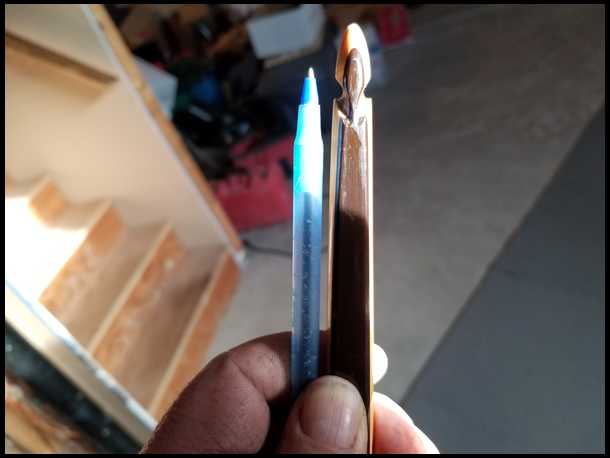
I am not buying much of what I am hearing
|
|
|
|
| From: Cameron Root
|
|
|
|
|
|
|
| Date: 13-Jan-18 |
|
1989 bow small tip epoxy ? 1953 big tip. Both have Rhino strings and preform about the same
|
|
| From: dean
|
|
|
|
|
|
|
| Date: 13-Jan-18 |
|
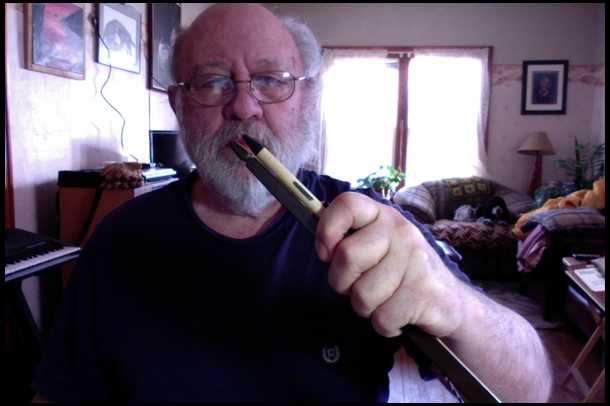
You want small tip, here's I gots yers small tip.
|
|
| From: dean
|
|
|
|
|
|
|
| Date: 13-Jan-18 |
|
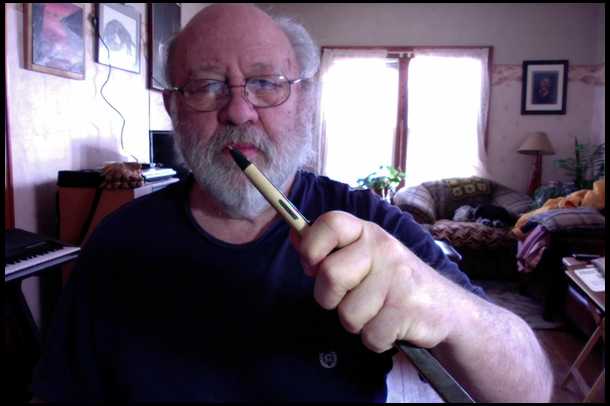
|
|
| From: Iwander
|
|
|
|
|
|
|
| Date: 13-Jan-18 |
|
Who ever had a small (Smooth-On EA 40 glued) tip come apart? I've never seen it. I'd bet the core would give out first.
|
|
| From: fdp
|
|
|
|
|
|
|
| Date: 13-Jan-18 |
|
I don't think it has anything to do with the adhesive (admittedly I could be wrong). I think it has more to do with a combination of liability, and the individual bowyer finishing out the tips on a particular bow.
Same as grips, how sharp the lines of the bow are overall, etc..
|
|
| From: dean
|
|
|
|
|
|
|
| Date: 13-Jan-18 |
|
The above bow is 42 years old.
|
|
|
|
| From: dean
|
|
|
|
|
|
|
| Date: 13-Jan-18 |
|
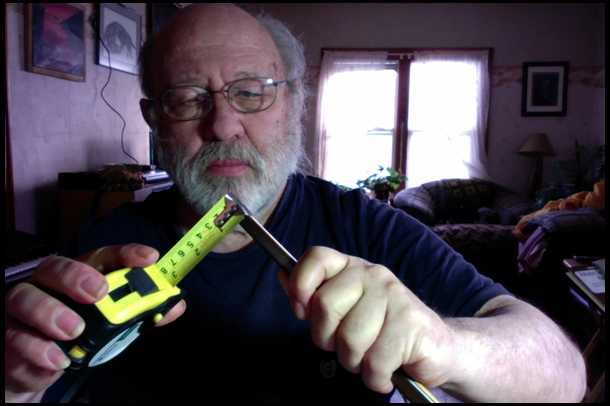
3/8"
|
|
| From: dean
|
|
|
|
|
|
|
| Date: 13-Jan-18 |
|
Longbow
|
|
| From: Cameron Root
|
|
|
|
|
|
|
| Date: 13-Jan-18 |
|
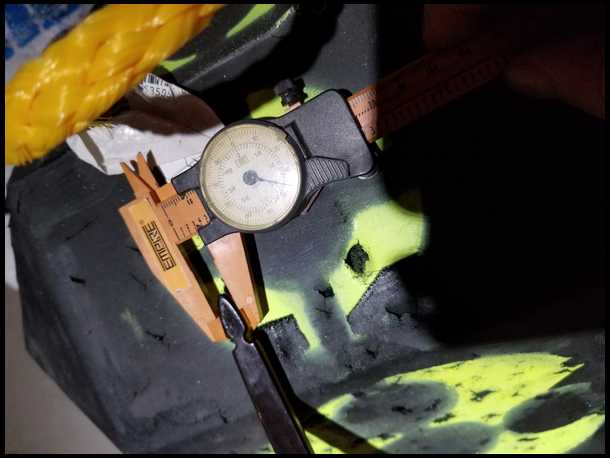
Dean I can tie that. With your old bow
|
|
|
|
| From: dean
|
|
|
|
|
|
|
| Date: 13-Jan-18 |
|
You are cheating, only a cheater would measure above the string grove, I'm telling.
|
|
| From: Cameron Root
|
|
|
|
|
|
|
| Date: 13-Jan-18 |
|
2 types of people cheaters and losers
|
|
|
|
| From: Cameron Root
|
|
|
|
|
|
|
| Date: 13-Jan-18 |
|
This new bow has small tips they are deany weeny
|
|
| From: dean
|
|
|
|
|
|
|
| Date: 13-Jan-18 |
|
That bow looks like it's wore out, I would pitch if I were you.
|
|
| From: crookedstix
|
|
|
|
|
|
|
| Date: 13-Jan-18 |
|
Well, maybe we should re-frame the discussion a bit:
why did limbs get so wide, and tips so big and clunky, from say 1964 onward?
And again I would ask if any others have noticed the older bows, with their skinny limbs and small tips, outperforming the production bows of the mid-60's and 70's, and even up to the FF-strung bows of today? Because I have certainly seen this.
|
|
| From: Cameron Root
|
|
|
|
|
|
|
| Date: 13-Jan-18 |
|
I dont have most of that comparision. My widest limbs are on my 57ish Root gamemaster. I dont see big difference in tips. Bear green tips are my largest out of new and old. Smallest tip are on a Browning Nomad ( no overlays ). New curves I have are not large in the tips or overly wide and are not slow. My old stuff isn't slow either so for me to answer your observations no not on my bows
|
|
| From: Dan In MI
|
|
|
|
|
|
|
| Date: 13-Jan-18 |
|
"outperforming the production bows of the mid-60's and 70's"
What's easier to mass produce without a bunch of hand fitting????
|
|
| From: Iwander
|
|
|
|
|
|
|
| Date: 13-Jan-18 |
|
Kerry, Which pre '64 bow would you bet on in a speed contest (28" 10GPP hunting arrow with a broadhead)?. I have a favorite in Lyle Shannon's Striker that he built for Bob Gulman's Golden Arrow archery shop in Duarte CA. Those bows were killing goats and sheep (long shots) on the Island hunts every weekend.
|
|
|
|
| From: crookedstix
|
|
|
|
|
|
|
| Date: 13-Jan-18 |
|
Iwander, You know I want one of those Shannon bows! ;-)
I can't see the tips or limb cores on it, but from the photo and specs it clearly has a lot of "fast bow" characteristics, like the very long riser and the tips so far forward. The Drake I'm playing with right now has nocks that are over 5-1/2" forward of the throat, and a 1960 White Wing that I had (which is now with Knifeguy) had its nocks 5-1/4" forward. Both of those bows are in the "skinny limbs, small tips" category; as is a 1963 Swift Wing that I have. All three of those bows generate more yards of cast per pound of draw weight than any bow from the mid-60's or 70's that I've tested--including a 1970 Tice & Watts that I had already reshaped the tips on.
Every era has its one or two real burners, and I don't doubt that your Shannon bow is one of those.
|
|
| From: Frisky
|
|
|
|
|
|
|
| Date: 14-Jan-18 |
|
What about the Shakespeare Cascade? That bow was advertised as being very fast due to the 2.5" wide limbs.
Joe
|
|
| From: Frisky
|
|
|
|
|
|
|
| Date: 14-Jan-18 |
|
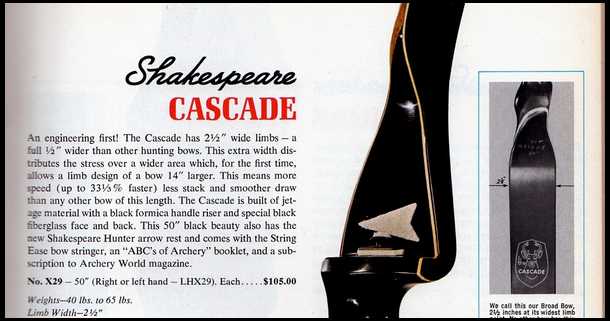
Found this online.
|
|
| From: Pdiddly
|
|
|
|
|
|
|
| Date: 14-Jan-18 |
|
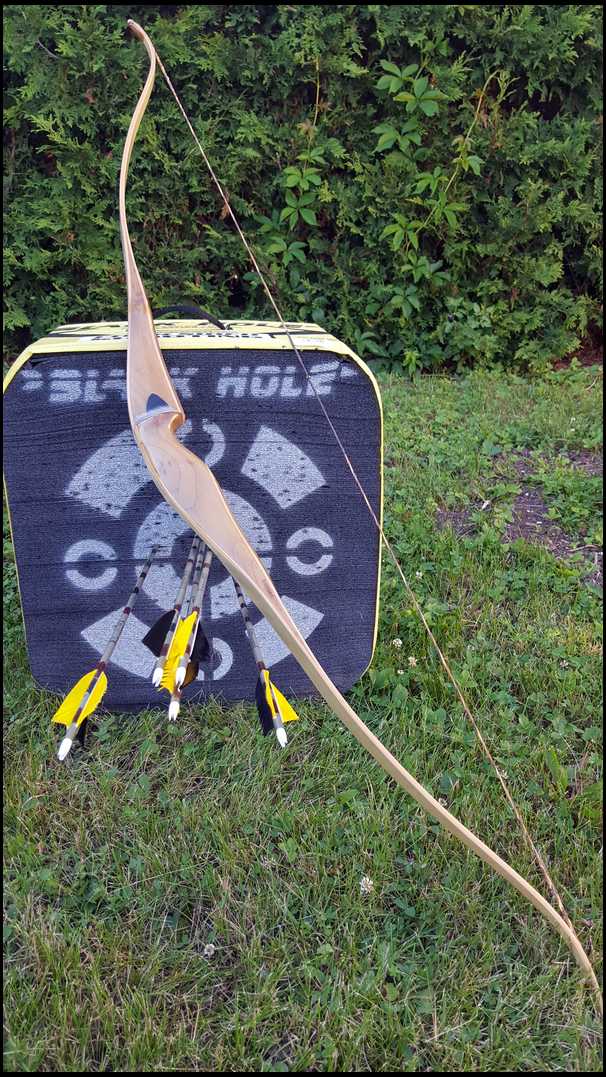
I have two Cascades...they are smooth but I have faster bows in the stable.
Here is a bow with very small tips and narrow limbs. I have posted pics before. It is a Dick Green from San Diego. 50# and 60".
It is very fast, quiet, points well and has lots of cast.
Kerry owned this before me and I think it performed quite well.
|
|
| From: Pdiddly
|
|
|
|
|
|
|
| Date: 14-Jan-18 |
|
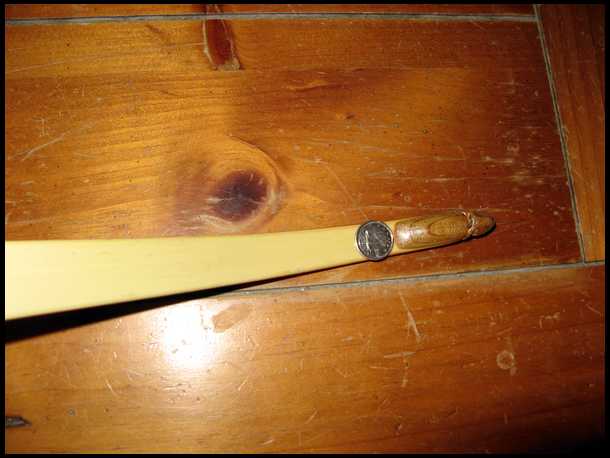
The limbs are 1 3/8" wide at the fades and 1/2" just before the nock groove.
The tips are 3/8" wide.
That's a dime.
|
|
| From: Pdiddly
|
|
|
|
|
|
|
| Date: 14-Jan-18 |
|
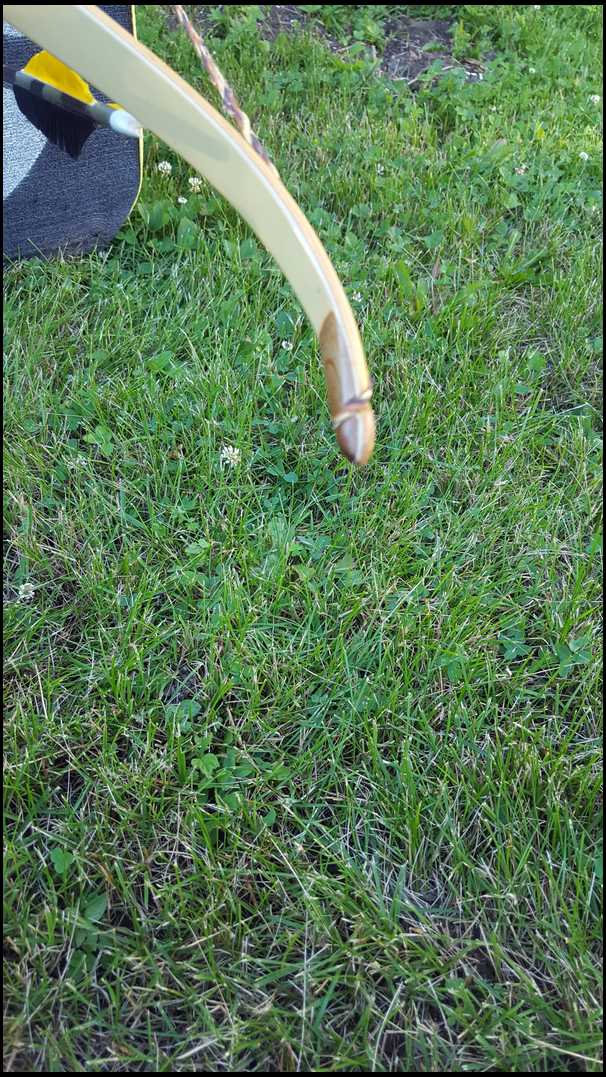
Another view...
|
|
| From: Renewed Archer
|
|
|
|
|
|
|
| Date: 14-Jan-18 |
|
I always thought (not sure why) larger tips came as more bows were sold and were produced with more mass production, requiring less expertise. Also from 60-61 there were a lot of returned or broken bows under warranty, at Bear at least which had the majority of the market, and that continued into 62 and 63 in terms of honoring warranties. The company suffered financially. Bigger tips were a way to decrease the number of broken/returned bows. They took more abuse and did not have to be handled as carefully, as more people new to archery were buying bows and perhaps didn't know how to care for their bows that much.
I only really like Bear bows made from 59-62, and even more from 59-61 with the really thin narrow tips. I think they shoot faster and straighter but that's just my opinion. Bottom line is I LIKE the way they look and I DON'T LIKE the way wide tips look. There's an appeal to a long, thin graceful limb and tip that goes beyond it's function even if the form and function are integrally related.
It's the same with many things we make, from bottles to cars. IMO we have an ingrained, hard wired like of certain shapes and a dislike of other shapes that we have evolved with over millions of years. Like snakes. The fear of snakes goes back in primates tens of millions of years, and there are actually cells in the brain whose only job is to identify objects that look and move like snakes. Similarly we have a disgust of things that look rotten or putrid and we like crispy foods because it indicates (in a wild food) freshness. We all like beauty in other people and there are certain proportions in various body areas that indicate beauty, universally. This also is hard wired and is an adaptation to selecting mates in whom beauty is indicative of genetic health... or the lack of "bad genes" and un-fitness. So I think I'm being quite natural when I say I like the shape of long thin bow tips... must be something inherently fit and right about them!
Shandor
|
|
| From: crookedstix
|
|
|
|
|
|
|
| Date: 14-Jan-18 |
|
Shandor,
The Bear tips of the mid-Sixties and ever since (at least until Frisky's new red tips!) are exactly what I had in mind, but in thinking back to other bows of that era, I also think that Wing, Shakespeare, Browning, and Herter's were growing bigger tips and wider limbs then as well.
You're probably right to suspect the dollars-and-cents motive as being the driving force--cheaper to make them that way, and less chance of losing money on a return over a twisted limb or broken tip...and the bows were still fast enough to do their job.
But, our tastes (and many others')agree on the way limbs and tips looked in the late Fifties and early Sixties--and tastes aside, my tape measure says they sling an arrow farther.
|
|
| From: The Lost Mohican
|
|
|
|
|
|
|
| Date: 14-Jan-18 |
|
Renewed Archer has explained what I always believed...the reason for limb change and design was a financial one. Many of the custom bowyers of the past twenty years have made 50's style recurves, which were my preference. One bow I had that fit into this category ( fish hook curves forward of handle, small limb tips and narrow limbs) was super fast and very noticeable to the many archers I shot with over the years. I took great care of it but accidentally dry fired it after being so careful for 17 years. It cracked at the fades. ((((. When I spoke with the bowyer he told me he had to widen the limbs on the model, because too many of the bows were not being strung correctly and were coming back with twisted limbs. I know this is but one example.,but I was convinced history was just repeating itself. TLM
|
|
| From: The Lost Mohican
|
|
|
|
|
|
|
| Date: 14-Jan-18 |
|
To continue this story I then went on a journey testing many recurves to include vintage production used bows and all the popular custom ones. By far the fastest and smoothest to me were a Fedora 560, and then the Bruin. None of the production bows came close. An opinion from those bowyers on bow design and glues would be informative. TLM
|
|
| From: mangonboat
|
|
|
|
|
|
|
| Date: 14-Jan-18 |
|
I dont know if there is a cohort-controlled study that has ever been published on this topic, so I am free to cite personal observation, anecdotal evidence and Kerry's golf course flight tests every winter. I think there are multiple factors at work. 1) As noted above, and consistent with my observations and recollection of anecdotes, field archers and bowhunters using production recurves in the late 1950's and early 1960's experienced a lot of twisted and blown up limbs. A lot of folks who could afford one sought custom bows because they perceived them to be more reliable. The design and manufacturing of bows at a "factory" level went through a lot of changes 1950-1964, far more than in the 50+ years since then. Thus, I beleive, one factor is manufacturers trying to respond in a businesslike way to the challenges of making a inherently unstable object into one that could be "stable" and affordable in mass production. 2) As noted above, one response to the stability/durability challenge was wider limbs with beefed up/wider tips. The wide limb bases and realities of mass production also reduced the dynamic impact of riser "wedges", i.e., where the thinnest part of the riser body and overlays extended well into the limbs, a feature of Harry Drake's bows and others. 3) Bear Archery used 3M glass one year only, 1962, in their top five models: Kodiak, Kodiak Special, Kodiak Magnum, Grizzly and Polar. Anecdotally, many folks who have shot a lot of Bear bows say the glass on those 1962 bows held up better and they were the best performers Bear ever made. In addition to the 3M glass, those 1962 Bear models were the last year of comparatively narrower limbs with pointed rather than broad, flat tips on the limbs. Design + materials? Or just perception?
|
|
| From: Iwander
|
|
|
|
|
|
|
| Date: 14-Jan-18 |
|
Ok, Who's got the 3M glass stash?
|
|
| From: felipe
|
|
|
|
|
|
|
| Date: 16-Jan-18 |
|
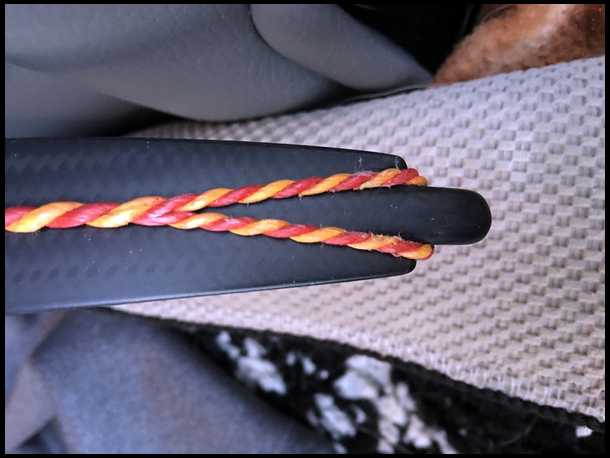
Uukha seems to be pushing the efficiency envelope with their monolithic limbs. No glue joints to creep, narrow and thin with no extra fat, just lean and mean.
|
|
If you have already registered, please sign in now
For new registrations Click Here
|
|
|
|



